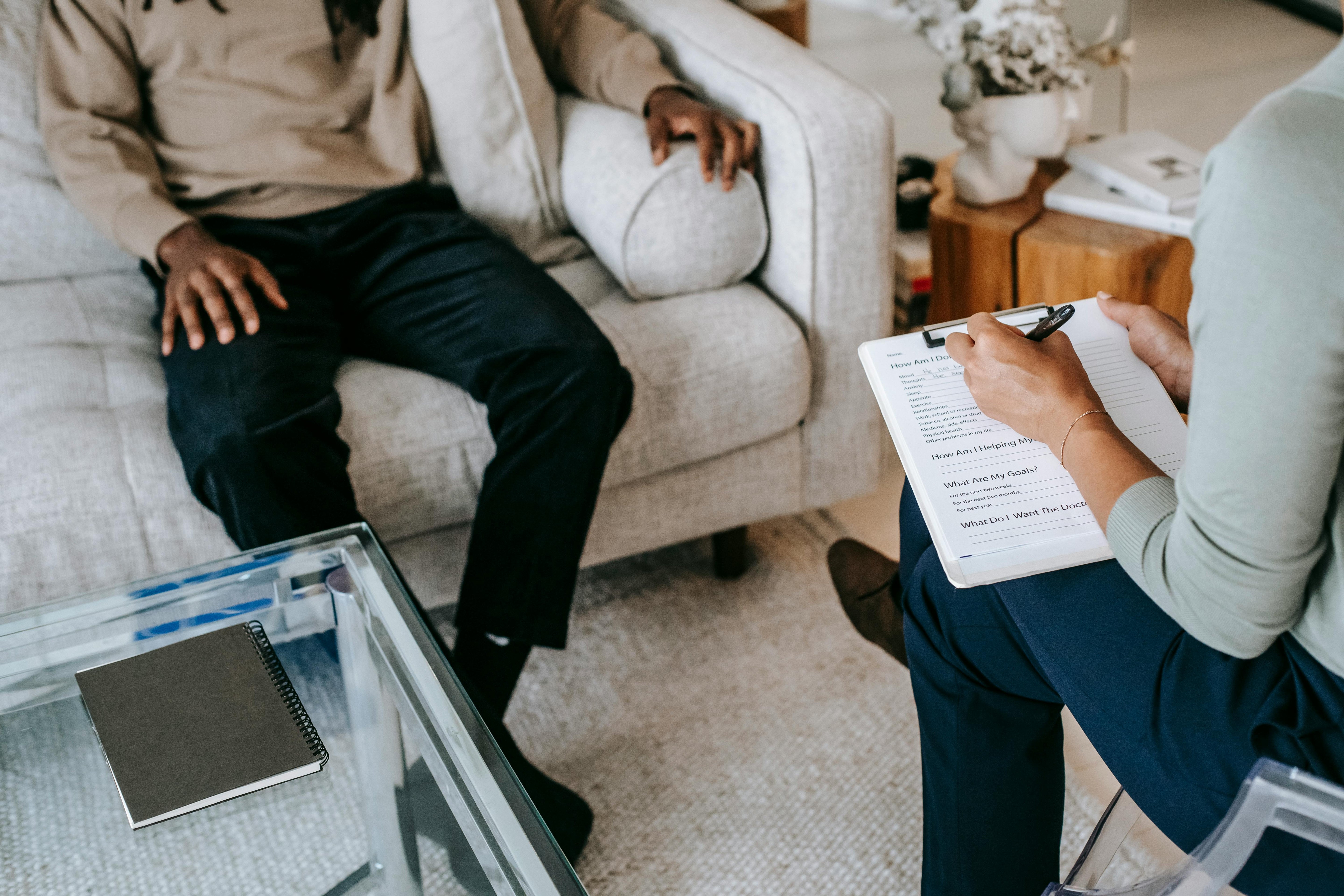There’s a quiet kind of dread that follows you from morning to night. A twinge in your chest, a twitch in your eye, a skipped heartbeat—each sensation becomes a headline. You tell yourself you’re being dramatic, but your body doesn’t believe you. If your inner monologue keeps repeating “health anxiety is ruining my life,” you’re not weak or irrational. You’re scared. And your brain is overprotecting you.
This is survivorship dressed up as vigilance. It makes sense. And it can change.
Naming the Pattern: What Health Anxiety Really Is
When people say “health anxiety is ruining my life,” they’re naming a loop where worry about symptoms, diseases, or mortality takes over daily living. It can look like reassurance-seeking (doctor visits, tests, asking loved ones to check your pulse), compulsive Googling, body scanning, and avoidance of activities you once enjoyed “just in case.”
Clinically, this sits within anxiety spectrum issues—often linked to OCD-style uncertainty intolerance, trauma, and attachment injuries. Your mind is trying to control the uncontrollable: the fact that bodies are imperfect and life carries risk. The goal isn’t to eliminate uncertainty (impossible). It’s to build emotional regulation, tolerance for not knowing, and a steadier relationship with your body.
How “Health Anxiety Is Ruining My Life” Shows Up Day to Day
Health anxiety is rarely loud all at once. It’s cumulative, like a slow tightening.
- Morning: You wake scanning for sensations. A slight headache becomes “brain tumor.” Your day starts on red alert.
- Afternoon: You notice a flutter in your chest. You check your pulse 14 times, then call your doctor’s office, then fall into medical forums. Work blurs.
- Evening: You cancel plans. No gym, no dinner out. You’re protecting “just in case,” but your life is shrinking. Loneliness grows, which ironically makes symptoms feel louder.
- Night: You replay your day, hunting for clues you missed. You promise to stop Googling tomorrow. By midnight, you’re searching again.
Emotionally, you might feel shame (“I should be able to control this”), anger (“No one understands”), and grief (“I’m losing time to fear”). None of this means you’re broken. It means your fear response is overfiring and needs retraining.
Try a brief check-in:
- Am I treating a sensation like a verdict instead of a data point?
- Have I sought reassurance more than two times about the same concern?
- Is my avoidance preventing valued activities or relationships?
- If a friend felt this, would I tell them it was proof—or a feeling to hold gently?
If your answers lean toward fear, that’s information—not a failure.
Why Your Brain Does This: A Compassionate Frame
The brain’s job is to keep you alive. When it links a sensation with danger—maybe after a health scare, a loss, or chronic stress—it starts over-monitoring. This is classical conditioning with a modern twist: your smartphone puts the entire internet’s worst-case scenarios in your pocket.
From a CBT perspective, the cycle often looks like this:
Trigger (sensation) → Catastrophic thought → Anxiety spike → Safety behavior (Googling, checking, asking) → Temporary relief → Reinforcement of the cycle.
From a trauma lens, health anxiety can be a way to manage helplessness. If you can catch the disease early, you won’t be abandoned. If you can control every variable, nothing bad will happen. It’s an attachment strategy—seeking safety in certainty when human connection or trust feels fragile.
Understanding the “why” doesn’t fix the “how,” but it opens a kinder path to change.
“Health Anxiety Is Ruining My Life”: Grounded Strategies That Actually Help
You can’t out-logic anxiety with logic alone. You need behavioral experiments, body-based regulation, and values-led choices that rebuild trust with yourself.
1) Set Boundaries With Reassurance
Reassurance is a short-term soother and a long-term trap. Create compassionate limits.
- The 24/3 Rule: Wait 24 hours before searching symptoms; limit to 3 reputable sources (e.g., your country’s official health site, a major hospital’s page, a clinician’s guide). No forums. No doom-scroll.
- Reassurance Rationing: Choose two people you can ask for reassurance—maximum once per concern. Keep a log to notice patterns.
When the urge hits, say: “I’m in the loop. I can surf this wave.” Then shift to grounding.
2) Build a Body Literacy Practice
Your body needs to learn that sensations are data, not danger.
- Daily neutral scans: Spend 2 minutes noticing sensations without labeling them good/bad. “There is warmth in my hands. There is tightness in my jaw.” No story, just noticing.
- Sensation experiments: After safe exercise, sit and notice your heart beating fast. Tell your nervous system, “This is safe arousal.” Name and normalize.
3) Use CBT and Exposure Wisely
Cognitive tools help—but pair them with behavior.
- Thought labeling: “This is a catastrophic thought, not a prophecy.” Write it down. Answer with a balanced alternative: “There’s a 1% chance of X; there’s a much larger chance this is benign. I’ll act from the larger probability.”
- Exposure ladder: Rank feared situations (e.g., not checking your pulse for 10 minutes → 30 minutes → 2 hours; going to the gym despite palpitations). Practice stepwise. Expect an anxiety spike; ride it down without safety behaviors. That’s how the brain relearns.
4) Regulate the Nervous System, Not Just the Mind
An anxious body needs rhythm and containment.
- Breath pacing: 4-second inhale, 6–8-second exhale, 3–5 minutes. Longer exhales cue safety.
- Cold and pressure: Cool water on wrists, a weighted blanket, or a firm pillow hug. These send reliable signals of containment to your nervous system.
- Move daily: Gentle cardio and strength train if cleared by a clinician. Exercise isn’t just “healthy”—it recalibrates your interpretation of bodily signals.
5) Create a “Health Anxiety Plan” With Your Clinician
Partner with a professional so you’re not policing yourself alone.
- Schedule reassurance: A monthly or quarterly check-in to review concerns, labs, and plans. Between visits, defer to the plan unless new, significant, and persistent symptoms arise.
- Criteria for care: Write down when to seek urgent help vs. when to wait and observe. Put it on your fridge. Externalize the decision-making to reduce spirals.
- Medication: SSRIs/SNRIs can reduce overall anxiety. Not a cure-all, but often a helpful floor. Discuss risks and benefits.
6) Repair Your Relationship With the Internet
The internet is a tool; anxiety uses it like a weapon.
- Digital guardrails: Block symptom forums. Use website timers. Keep your phone out of the bedroom.
- Replace the ritual: When you want to Google, do an alternate action for 10 minutes—walk, stretch, text a friend with your “I’m in the loop” code word. If you still want to search after 10 minutes, revisit your 24/3 rule.
7) Strengthen Identity and Values
Health anxiety compresses life into prevention. Re-expand it through meaning.
- Values inventory: Write 3 values you want your weeks to reflect (e.g., connection, creativity, vitality). Choose one micro-action per value—text a friend, sketch for five minutes, take a 10-minute walk.
- Future statements: “Even if anxiety is loud today, I will live five minutes of the life I want.” Keep it small and doable. Small wins teach your nervous system that life continues.
When Loved Ones Don’t Understand
It’s hard when people say “just stop worrying.” You can ask for targeted support.
- Share a one-page guide: What helps (calm presence, distraction, going for a walk) and what doesn’t (reassurance debates, Googling with you).
- Agree on scripts: “I love you. Let’s follow your plan.” “Do you want comfort or problem-solving?” Consistency beats persuasion.
If you’re the loved one: validate the fear, then redirect to the plan. Compassion with boundaries supports recovery.
A Softer Ending: Life Beyond the Microscope
If you’ve whispered “health anxiety is ruining my life,” you’ve also told the truth about your pain. That takes courage. Relief won’t arrive in a single epiphany; it grows in the space between urges and actions—where you breathe, wait, and choose something kinder.
Your body is not an enemy to outsmart. It’s a companion to learn. On the days the fear swells, let your life be small but real: a meal you enjoy, a laugh you didn’t expect, a walk where the air reminds you you’re here. That is healing, one ordinary moment at a time.
---






Leave a comment
This site is protected by hCaptcha and the hCaptcha Privacy Policy and Terms of Service apply.